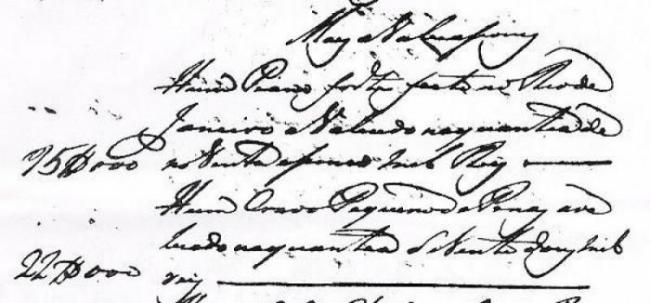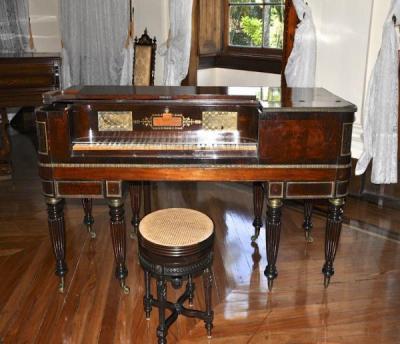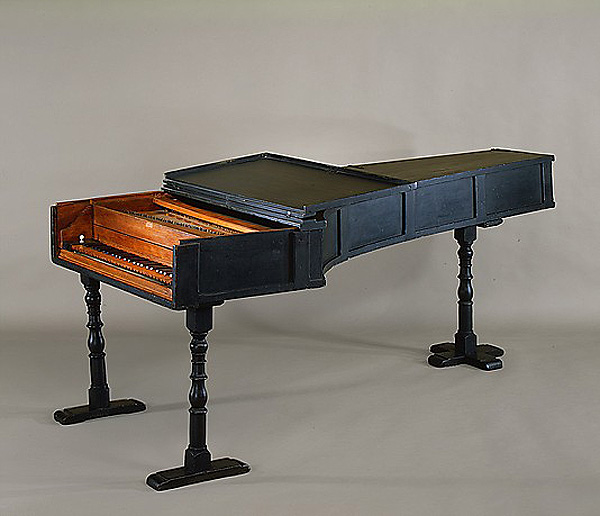Piano
Only created at the end of the XVII century, the piano became the most-played keyboard instrument from the end of the XVIII century onwards.
How does it work?
Its sound is produced bay hammers striking the strings which make it capable of subtle dynamic nuances.
A bit of history...
The piano was invented in Italy by Bartolomeo Cristofori in 1698 and became well-known across Europe throught the XVIII century. It was also called pianoforte or fortepiano.
|
|
The first models were in the style of grand pianos, similar to that of the harpsichord. However, various other models were also developed, aimed at reducing the space that the piano took up inside peoples' homes.
Pianoforte by Bartolomeu Cristofori (1720) - The Metropolitan Museum of Art - EUA |
 The earliest reference to the piano in Rio de Janeiro dates from 1798. After the death of the botanist Antônio Pereira Ferreira, an inventory of his possessions mentioned a "Pianoforte made in Rio de Janeiro, valued at an amount of ninety-five thousand réis". This shows that, even before the arrival of the Portuguese Royal Court in Brazil (1808), musical instruments were already known in the city and possibly made there as well.
The earliest reference to the piano in Rio de Janeiro dates from 1798. After the death of the botanist Antônio Pereira Ferreira, an inventory of his possessions mentioned a "Pianoforte made in Rio de Janeiro, valued at an amount of ninety-five thousand réis". This shows that, even before the arrival of the Portuguese Royal Court in Brazil (1808), musical instruments were already known in the city and possibly made there as well.
Excerpt of an inventory of a pianoforte (1798) - National Archives - RJ
One of the only surviving pianos from this period in Rio de Janeiro may have belonged to the Empress Leopoldina and can currently be found in the Brazil's Imperial Museum at Petropolis. It is a rectangular instrument, made in the 1820s by the well-known English piano-maker John Broadwood.

Square pianoforte by John Broadwood (c. 1820) - Imperial Museum of Petrópolis - RJ
Watch the video to see pianist Maria Teresa Madeira playing a 19th century Broadwood piano.

